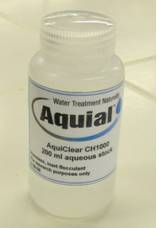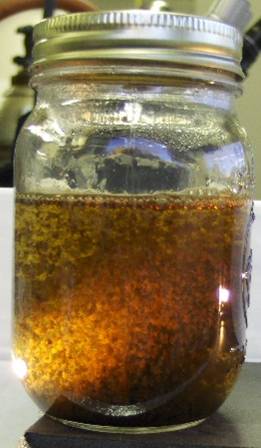|
|
|
Coagulants
Aquero Company is introducing some fully biodegradable and environmentally
friendly coagulants for water clarification applications. Below is some information about coagulants and their use.
In oilfield recovery operations, water is used for many purposes. During many of these, a leftover stream of produced water is generated. The produced water often occurs as a stable reverse (oil-in-water) emulsion that needs to be cleansed prior to recycling and re-use. The emulsified, micron and sub-micron sized oily droplets in water are stabilized owing to their own partially ionic character, typically partially anionic. There are residuals of many complex hydrocarbons that contain carboxylic groups and sometimes sulfated or sulfonated residues and the like. They are too hydrophobic to be soluble, at least most of them are like this, and they don't separate well during the separation of the product oil and the water, so they end up in the produced water stream. Usually, they are present along with some micro clays and other solids like sand particles, as a few tenths of 1 % by weight, although sometimes the emulsified oily solid content is a lot higher than this. The emulsified oily phase is thought to consist of the anionic groups facing outward toward the bulk phase of the water, with the hydrophobic parts inward, forming tiny micelles. These are dispersed from one another via the anionic charge repulsion, and hence the stable emulsion. A first step, and often the only step in commonly encountered chemical treatment protocols, is to attempt to neutralize the charge repulsion and thus destabilize the emulsion. This is what coagulants are supposed to do. The most commonly used coagulants in oilfield applications are polycationic, vinyl petro-polymers like the copolymer of epichlorohydrin and dimethyl amine (polyEPI/DMA). If the right amount of a polycation is added to cover up enough of the anionic charges, the oily micelles begin to be drawn toward each other through hydrophobic attraction. At this stage, the water begins to clarify with micron-sized oily particulates as one phase and clearer water as another. This is OK, but the solid phase is very easily stirred, and can be re-emulsified if conditions are too turbulent in the process stream. This occurs because the polycations normally only cover up a relatively small fraction of the anionic charges that are thought to be located at the outer surface of the micelles. The interior of the micelles are not neutralized and can be re-exposed under shear forces. This restores the reverse emulsion, only now it is more complex and harder to fix. Another commonly encountered problem is that the distribution of oily solids in water can be converted from an anionic dispersion to a cationic dispersion if the dose of the polycationic coagulant becomes too high. A operator naturally has the tendency to increase the dose if the water isn't responding very well for one reason or another, and often this is the wrong move. Such a stable, reverse emulsion that has been "flipped" from anionically dispersed to cationically dispersed is even harder to fix.
Another thing to keep in mind about polycationic coagulants is that the covering of cells and
cellular components (like cell walls, cell membranes, membranes of organelles) are almost invariably net-anionic in character.
This means that polycations tend to stick very nicely to living things, often disrupting cellular processes. In fact,
many biocides and biostats are polycationic for this reason. |
|||||||||||||


